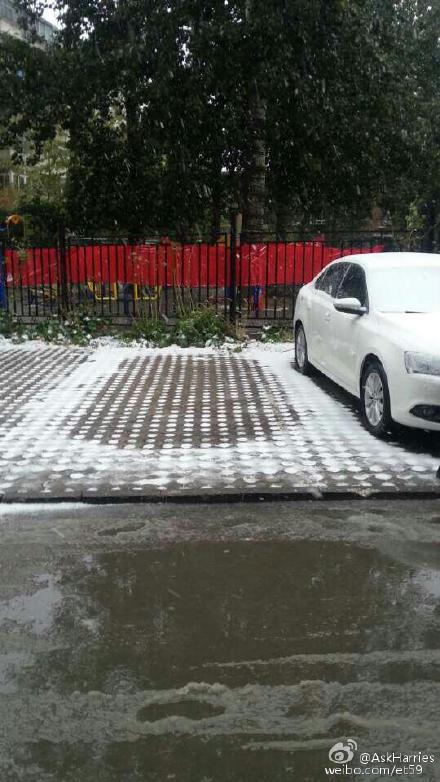HashMap源码分析
本文针对HashMap源码中的一些重要方法做讲解。
Android中的HashMap与java中HashMap实现有差异,这里以Android的源码为例进行讲解。
成员变量说明
1. int DEFAULT_INITIAL_CAPACITY = 4;//默认初始化的容量 2. int MAXIMUM_CAPACITY = 1 << 30; //HashMap最大的容量 3. float DEFAULT_LOAD_FACTOR = 0.75f; //判断是否扩容时用的计算因子 4. int threshold ; //用于比较是否该扩容,其值为 capacity * load factor 5. int size; //当前存储的数据容量 6. HashMapEntry<K,V>[] table = (HashMapEntry<K,V>[]) EMPTY_TABLE;//数据存储在这 复制代码
成员变量table
HashMap内部实现的是Map.Entry<K,V> 的,数据以数组形式保存的链表。
transient HashMapEntry<K,V>[] table = (HashMapEntry<K,V>[]) EMPTY_TABLE; 复制代码
看一下HashMapEntry里面的代码,很简单:
/** @hide */ // Android added.
static class HashMapEntry<K,V> implements Map.Entry<K,V> {
final K key;
V value;
HashMapEntry<K,V> next;
int hash;
...
}
复制代码
保存了数据的key、value、hash以及以及下一个数据,就是典型的链表储存形式。至于put进来的数据,如何确定保存在table中的位置,请看下文。
构造函数
构造函数主要对初始化容量以及加载因子做了参数校验,以符合后续的操作
/**
* Constructs an empty <tt>HashMap</tt> with the specified initial
* capacity and load factor.
*
* @param initialCapacity the initial capacity
* @param loadFactor the load factor
* @throws IllegalArgumentException if the initial capacity is negative
* or the load factor is nonpositive
*/
public HashMap(int initialCapacity, float loadFactor) {
if (initialCapacity < 0)
throw new IllegalArgumentException("Illegal initial capacity: " +
initialCapacity);
//初始化容量
if (initialCapacity > MAXIMUM_CAPACITY) {
initialCapacity = MAXIMUM_CAPACITY;
} else if (initialCapacity < DEFAULT_INITIAL_CAPACITY) {
initialCapacity = DEFAULT_INITIAL_CAPACITY;
}
//校验加载因子的准确性
if (loadFactor <= 0 || Float.isNaN(loadFactor))
throw new IllegalArgumentException("Illegal load factor: " +
loadFactor);
// Android-Note: We always use the default load factor of 0.75f.
// This might appear wrong but it's just awkward design. We always call
// inflateTable() when table == EMPTY_TABLE. That method will take "threshold"
// to mean "capacity" and then replace it with the real threshold (i.e, multiplied with
// the load factor).
//默认扩容的阀值就是初始的容量
threshold = initialCapacity;
init();
}
/**
* Constructs an empty <tt>HashMap</tt> with the specified initial
* capacity and the default load factor (0.75).
*
* @param initialCapacity the initial capacity.
* @throws IllegalArgumentException if the initial capacity is negative.
*/
public HashMap(int initialCapacity) {
this(initialCapacity, DEFAULT_LOAD_FACTOR);
}
/**
* Constructs an empty <tt>HashMap</tt> with the default initial capacity
* (16) and the default load factor (0.75).
*/
public HashMap() {
this(DEFAULT_INITIAL_CAPACITY, DEFAULT_LOAD_FACTOR);
}
复制代码
数据put操作
最基本的数据保存的方法,下面细分讲解:
public V put(K key, V value) {
if (table == EMPTY_TABLE) {
inflateTable(threshold);
}
if (key == null)
return putForNullKey(value);
int hash = sun.misc.Hashing.singleWordWangJenkinsHash(key);
int i = indexFor(hash, table.length);
for (HashMapEntry<K,V> e = table[i]; e != null; e = e.next) {
Object k;
if (e.hash == hash && ((k = e.key) == key || key.equals(k))) {
V oldValue = e.value;
e.value = value;
e.recordAccess(this);
return oldValue;
}
}
modCount++;
addEntry(hash, key, value, i);
return null;
}
复制代码
操作流程如下:
- 内部回判断当前table是否为空,为空则初始化table,
- table不为空,则查询当前的key是否在table中有保存,有则用新value替换旧value,并返回旧value
- 若当前key未保存数据,则创建新的entry进行保存(中间有一步扩容的操作)
table初始化
/**
* Inflates the table.
*/
private void inflateTable(int toSize) {
// Find a power of 2 >= toSize
//取最靠近(大于等于)toSize的2的整数倍值
int capacity = roundUpToPowerOf2(toSize);
// Android-changed: Replace usage of Math.min() here because this method is
// called from the <clinit> of runtime, at which point the native libraries
// needed by Float.* might not be loaded.
float thresholdFloat = capacity * loadFactor;
if (thresholdFloat > MAXIMUM_CAPACITY + 1) {
thresholdFloat = MAXIMUM_CAPACITY + 1;
}
//真正初始化临界值
threshold = (int) thresholdFloat;
table = new HashMapEntry[capacity];
}
复制代码
看一下里面取2整数倍的方法
private static int roundUpToPowerOf2(int number) {
// assert number >= 0 : "number must be non-negative";
int rounded = number >= MAXIMUM_CAPACITY
? MAXIMUM_CAPACITY
: (rounded = Integer.highestOneBit(number)) != 0//最高位为0,直接返回1
? (Integer.bitCount(number) > 1) ? rounded << 1 : rounded//如果高位1的个数大于1,肯定不是2的整数倍,rounded扩大一倍,保证比number大
: 1;
return rounded;
}
复制代码
对于里面Integer.bitCount()不理解的同学可以参考这篇文章
Integer.bitCount实现过程
value存储
对key进行判断,若key为null则存储到table的第一位,否则查找应该存储的位置
int hash = sun.misc.Hashing.singleWordWangJenkinsHash(key); int i = indexFor(hash, table.length); 复制代码
每次put以及get都会用到上面2个方法,hash值用于确定entry在table中的位置
看一下indexFor()
/**
* Returns index for hash code h.
*/
static int indexFor(int h, int length) {
// assert Integer.bitCount(length) == 1 : "length must be a non-zero power of 2";
//上文可以知道table的length一定为2的倍数,这里length-1转换成二进制的时候可以肯定所有的位数都为1,
//h & (length-1)可以保证不同的hash值在table里分布
return h & (length-1);
}
复制代码
获取到index之后,去查找对应的链表,并循环遍历是否有保存的value,有则替换,否则插入新数据
for (HashMapEntry<K,V> e = table[i]; e != null; e = e.next) {
Object k;
if (e.hash == hash && ((k = e.key) == key || key.equals(k))) {
V oldValue = e.value;
e.value = value;
e.recordAccess(this);
return oldValue;
}
}
复制代码
来看一下插入数据的操作
/**
* Adds a new entry with the specified key, value and hash code to
* the specified bucket. It is the responsibility of this
* method to resize the table if appropriate.
*
* Subclass overrides this to alter the behavior of put method.
*/
void addEntry(int hash, K key, V value, int bucketIndex) {
//这里用到了上面提到的threshold,到达临界值,同时当前插入的位置上有链表后,进行扩容,并将数据重新存入(length改变后,同一个hash值通过indexFor()计算得到的位置可能会变)
if ((size >= threshold) && (null != table[bucketIndex])) {
resize(2 * table.length);
hash = (null != key) ? sun.misc.Hashing.singleWordWangJenkinsHash(key) : 0;
bucketIndex = indexFor(hash, table.length);
}
createEntry(hash, key, value, bucketIndex);
}
复制代码
数据get操作
相对put操作,get就比较简单了
/**
* Returns the entry associated with the specified key in the
* HashMap. Returns null if the HashMap contains no mapping
* for the key.
*/
final Entry<K,V> getEntry(Object key) {
if (size == 0) {
return null;
}
// 找到table中的链表位置后遍历循环比较取出数据即可
int hash = (key == null) ? 0 : sun.misc.Hashing.singleWordWangJenkinsHash(key);
for (HashMapEntry<K,V> e = table[indexFor(hash, table.length)];
e != null;
e = e.next) {
Object k;
if (e.hash == hash &&
((k = e.key) == key || (key != null && key.equals(k))))
return e;
}
return null;
}
复制代码
遍历
遍历的方法主要有3个
- keySet();
- values();
- entrySet();
这三个方法内部都是用的各自实现的HashIterator来进行遍历
private abstract class HashIterator<E> implements Iterator<E> {
HashMapEntry<K,V> next; // next entry to return
int expectedModCount; // For fast-fail
int index; // current slot
HashMapEntry<K,V> current; // current entry
HashIterator() {
expectedModCount = modCount;
if (size > 0) { // advance to first entry
HashMapEntry[] t = table;
//找到第一个不为null的HashMapEntry
while (index < t.length && (next = t[index++]) == null)
;
}
}
public final boolean hasNext() {
return next != null;
}
final Entry<K,V> nextEntry() {
if (modCount != expectedModCount)
throw new ConcurrentModificationException();
HashMapEntry<K,V> e = next;
if (e == null)
throw new NoSuchElementException();
if ((next = e.next) == null) {
//如果当前链表遍历完了,则查找下一个不为null的链表的位置
HashMapEntry[] t = table;
while (index < t.length && (next = t[index++]) == null)
;
}
current = e;
return e;
}
public void remove() {
if (current == null)
throw new IllegalStateException();
if (modCount != expectedModCount)
throw new ConcurrentModificationException();
Object k = current.key;
current = null;
HashMap.this.removeEntryForKey(k);
expectedModCount = modCount;
}
}
复制代码
总结
- HashMap插入数据不同步,所以是线程不安全的
- 内部使用链表 + 数组的形式保存所有的数据
- 每次扩容都是当前容量的2倍
正文到此结束
热门推荐
相关文章
Loading...












![[HBLOG]公众号](https://www.liuhaihua.cn/img/qrcode_gzh.jpg)

